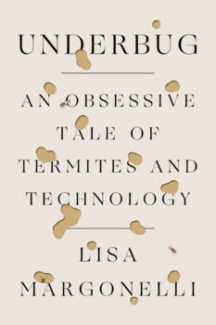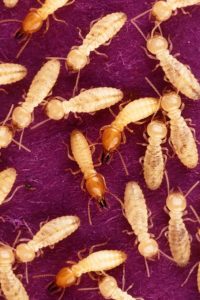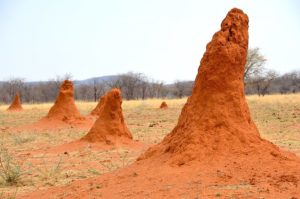Tiny saviors?
Author: Lisa Margonelli
 Apparently I was completely out of the loop. No one had the good graces to tell me when, sometime around 2008, termite taxonomy was rearranged, demoting the order Isoptera – the exclusive home of the infamously destructive and socially fascinating “white ants” – to a lowly infraorder within the order Blattodea. In other words, the once mighty termite was now officially just a unique type of cockroach. For entomophiles like me, this ranks right up there with the Pluto’s demotion to dwarf planet in the history of scientific hullabaloos, although the news of this particular event seems not to have made quite as many headlines. If the details of insect taxonomy and the life of one of nature’s most successful creatures intrigue you, chances are that Underbug will entertain.
Apparently I was completely out of the loop. No one had the good graces to tell me when, sometime around 2008, termite taxonomy was rearranged, demoting the order Isoptera – the exclusive home of the infamously destructive and socially fascinating “white ants” – to a lowly infraorder within the order Blattodea. In other words, the once mighty termite was now officially just a unique type of cockroach. For entomophiles like me, this ranks right up there with the Pluto’s demotion to dwarf planet in the history of scientific hullabaloos, although the news of this particular event seems not to have made quite as many headlines. If the details of insect taxonomy and the life of one of nature’s most successful creatures intrigue you, chances are that Underbug will entertain.
Focusing on the concept of the super organism, science journalist Lisa Margonelli travels the world, following the scientists who pursue a few challenging questions. How do animals as tiny – and seemingly simple – as termites work collectively to build and maintain some of the most remarkable structures on earth? Can just a few simple commands hard-wired in a tiny-brained organism really accomplish remarkable feats of construction and survival when multiplied a million-fold? And if we humans can figure out how they do it, how can their tricks help us improve the world?
It’s those kinds of questions that Margonelli explores as she visits countless termite mounds in the hostile deserts of Australia, Arizona and Namibia, hanging out with entomologists, computer scientists and engineers of all types. Hacking into termite biochemistry and microbiology they hope to transform the world with a new source of biofuel, but the seemingly simple quickly turns into a collection of dead ends. It doesn’t go much better when the computer geeks try and translate the collective behavior of a termite colony into a computer program. The author brings the reader along for the frequently bumpy ride, revealing the daily struggles involved in trying to solve these mysteries.
While the chronicle is consistently entertaining, I was disappointed that Margonelli spent more time delving into biotechnological applications of termite science and not so much time exploring the complicated lives of these amazing creatures themselves. I would a have preferred a balance in the opposite direction, but found the reading interesting nonetheless.
In the end, Underbug is an apt tribute to the most remarkable cockroaches on the planet, as well as the many indefatigable individuals who dedicate their lives to trying to understand them. Recommended for anyone who likes good science writing.
— D. Driftless
Termite mound photo by Olga Ernst (CC BY-SA 4.0)
[AMAZONPRODUCTS asin=”0374282072″]
- Best Non-Fiction of 2016 - February 1, 2017
- Little Free Library Series — Savannah - May 22, 2015
- Little Free Library Series — Wyoming - November 30, 2014




